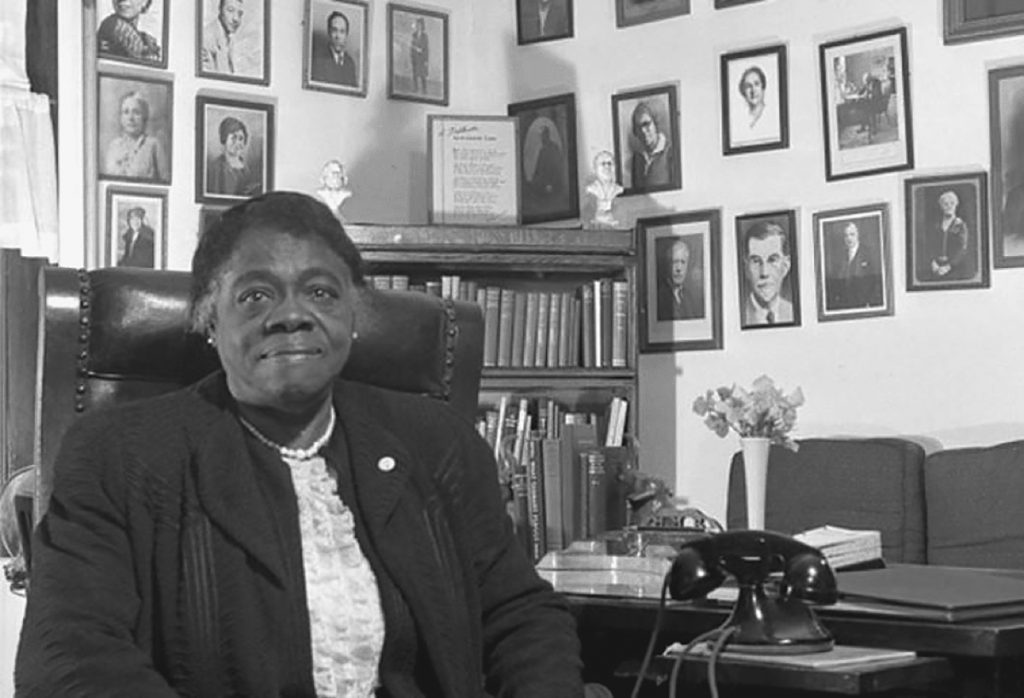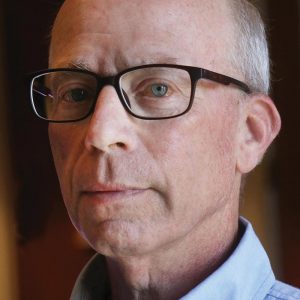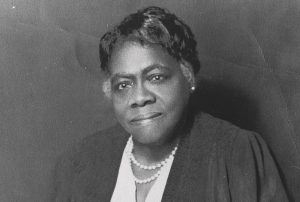
1. First Steps
In March of 2016, Gov. Rick Scott signed a law to replace the statue of Confederate Gen. Edmund Kirby Smith, which had been donated to the U.S. Capitol for display in Statuary Hall in 1922, with a new “Great Floridian.”
The search for a new sculpture was conducted by the Florida Department of State, Division of Cultural Affairs, which reviewed 3,585 submissions. The list was narrowed to 130 eligible names, including Mary Mcleod Bethune.
Dr. Bethune received 1,237 votes, easily outpacing the second-place subject who received 450 votes.
The selection of Dr. Bethune continues her legacy of accomplishment and she will be the first African-American to represent a state in Statuary Hall, the first African-American woman to represent a state and the first and only statue in the U.S. Capitol dressed in academia cap and gown.
 2. Statuary Hall
2. Statuary Hall
Occupying the space originally used as the chamber for the House of Representatives, the National Statuary Hall was created after Congress invited each of the states to contribute two statues of prominent citizens for permanent display. Initially all of the contributed statues were housed in the space, as the collection grew more space was needed. In 1933 Congress authorized the display of the statues throughout the Capitol.
Today, National Statuary Hall is one of the most popular rooms in the U.S. Capitol Building, with thousands of visitors passing through every day. It also continues to be used for ceremonial occasions and special events are held there, including activities honoring foreign dignitaries and presidential luncheons.

3. Fundraising Effort
The Dr. Mary Mcleod Bethune Statuary Fund, Inc. was formed in 2018 to raise private funds for the project. The Board of Directors of the Fund include Nancy Lohman, president; Bob Lloyd, secretary; Mary Greenlees, treasurer; Jennifer Adams, Jim Cameron, Michelle Carter, Brent Chrite, Joyce Cusak, Kathy Crotty, Daytona Beach Mayor Derrick Henry, Sherri Lloyd, Nellie Lupoli, Volusia County Councilwoman Billie Wheeler, ex-officio members Nilda Comes and Ashley Stoekel and recording secretary Danielle Garrett.
In addition to raising funds for the U.S. Capitol statue, the Board expanded the fundraising effort to include an additional $150,000 for placement of a bronze statue of Mary Mcleod Bethune in Riverfront Esplanade Park in downtown Daytona Beach.

4. Michelangelo’s Gift
Cut from the Italian Alps and quarries above Pietrasanta, Italy, the piece of marble used by artist Nilda Comas represents the largest – and last – piece of statuary marble from the quarry.
The marble from the quarries is the same used by Michelangelo to create his famous statue of David. It is said Michelangelo himself opened the caves in the mountains that had been abandoned by the ancient Romans to find the marble.

5. From Marble to Masterpiece
Artist Nilda Comas is the first minority Master Sculptor creating a statue for the National Statuary Hall Collection. Comas began with intensive research at the Congressional Archives, the State of Florida Archives and Bethune-Cookman University. Using historic photos of Mary Mcleod Bethune, Comas started with the creation of maquettes – models of the statue – made in clay. Included in the statue is the pedestal which will carry a quote from Mary Mcleod Bethune: “Invest in the human soul. Who knows, it may be a diamond in the rough.”
Comas was selected after a national search and was chosen from a field of 1,600 artists. She earned a Master of Fine Arts degree from the New York Academy and studied at the Accademia di Belli Arte in Carrara, Italy. Her works are on display in private and public collections around the world.
The last step before the statue was shipped to the United States was a blessing ceremony, a tradition for all statues before they leave the city of Pietrasanta.

6. The Pride of Florida
The finished statue will be on display at the News-Journal Center before departing for permanent placement in Statuary Hall. The Mary Mcleod Bethune statue will take the place of Dr. Richard Gorrie in National Statuary Hall. Gorrie’s statue will move downstairs into the Hall of Columns, taking the place of the statue of General Edmund Kirby Smith. That statue will return to Florida for future determination of public display.









